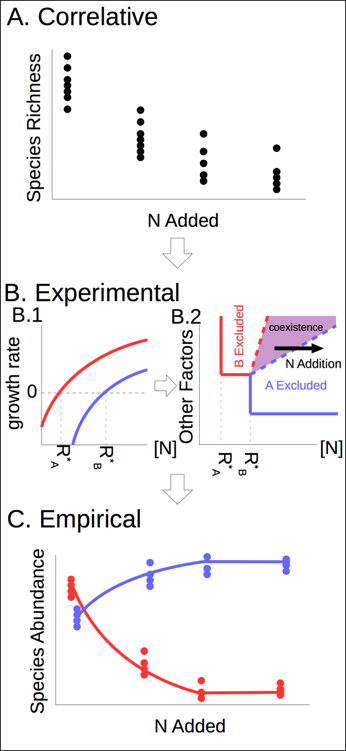sMultiMod
Scientific Investigators
Adam Clark (PI)
Stan Harpole
In Collaboration with:
Helmut Hillebrand
What are the major mechanisms determining coexistence and community composition in ecological communities, and how do these differ across systems and sites?
Though many mechanisms are hypothesized to explain coexistence in ecological communities, there have been comparatively few tests to determine which mechanisms matter the most within any given site or system. We are working to synthesize understanding from observational studies and experiments in grasslands and aquatic systems to quantify the relative importance of potential coexistence mechanisms. We focus on these systems because of the wide availability of existing theory and data.
We are working to address the following questions:
(1) What are the primary mechanisms that are currently hypothesized to be important for determining community composition in grassland and aquatic systems?
(2) How much support is there for each of these hypothesized mechanisms across several case studies from well-studied experimental systems?
(3) How can we develop predictive models that identify when and why mechanisms’ influences change across systems and sites?
To address these questions, we are working to:
(1) Produce novel reviews of coexistence mechanisms spanning multiple systems and sites.
(2) Determine the importance of major mechanisms within specific systems and sites.
(3) Synthesize results to develop novel predictive models.
With this project, we hope to integrate empirical and theoretical understanding from highly controlled small-scale, and long-term larger-scale, experiments in both aquatic systems and grasslands. This could help identify important mechanisms from across disciplines that are less commonly studied within individual systems, and could reveal when and why results from individual systems can be generalized across multiple systems. These results could therefore identify a subset of models that predict outcomes of community assembly across unprecedentedly large spatial and temporal scales.

